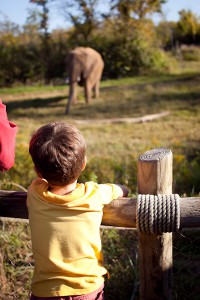I would like to start a series of workshops that will help the average user (who is looking for more than average photos) to use their camera and really delve into the “Settings” function and take the mystery out of some of the terminology used in the camera menus.
I do not want to insult anyone, but I do think we should start with some basic terminology, after all, this is titled Workshop #1.
- Composition=Simply put, composition is all the factors that “Compose” your shot. Composition refers to the of the subject or subject matter and its relative position, the light and it’s position, the focus of the camera and the position of the eye of the camera. This is a simple word, with a ton of weight and innuendo. You can have your camera set perfectly, be in perfect light and be surrounded by a perfect moment and still get, shall I say, garbage? out of you camera. It is the bane of all who own a camera to take pictures like a fiend, offload them and realize that you missed it, that moment, that event is gone forever and that most of the files you trucked home are going straight into the Trash Folder. Bummer. So lets get back to Composition.
- What is it that you want to bring home in this picture? What angle? Is your child doing something with their hands? Is it the expression on their face when they see the cake with the candles? Do you need to step back and make sure the pinata is in the scene as well?
- Work not on the number of pictures you are taking but on the different angles you are shooting from.
- Know that when you are taking pictures you are capturing light. It sounds weird but without light, there is no photo, the camera sees nothing. Find the light in the room and stand where you can see it landing on your subject, shoot from the angle that the lights pours in, do not shoot into the light (as a general rule).
- If you don’t know what setting to use at first, use Auto. That is the only time I will tell you to use Auto. You have thought, Auto does not. But it’s does get the job done and take the pics. As you learn more, we will improve and move beyond Auto.
Below are 2 photos, taken within seconds of each other. But, I played around with the composition a bit. We were at the zoo, so naturally I wanted to get pictures of the animals, but as a rule, I always try to include someone I love in the pics, even if they don’t appear to be the main subject. It makes the pictures more special to me years later.
Both shots have the same main ingredients (but they differ slightly in composition): my Boy, a lovely sunny afternoon and a friendly elephant. I was looking for a shot to post on my family blog, so I went with the one on the right. In this shot the elephant is out of focus but still present, and my Boy is looking out to the elephant, and I’m sure, fantasizing about riding it. I like the composition better for my purposes, which were documenting my family at the zoo. If my purpose was to document types of elephants, then I would choose the first photo, since my Boy is incidental, and the elephant is in clear focus. Notice that both photos have the elephant placed dead center, but by focusing on the Boy in the second one and shooting while he was obviously absorbed in interest, it is a sweet pic of him enjoying the zoo. Definitely a keeper and one to share on my blog.
If I really wanted to get picky, I would crop out the red sleeve but editing is a topic for another day.
- Taking tons of pictures will not guarantee GOOD pictures. You must give the camera a brain.
*I’d love to hear back from you. Let me know what you thought and what you would like to know more about.


Looking forward to the next workshop…I need to know how to use all the setting on my handy dandy cool pix s8100… Exposure, etc… I want to take a picture of my house with the Christmas lights on and it just isn’t working!
Thank you for posting this series. This one was very helpful to me. I rarely seem to get enough light into a picture so the tip about shooting from the different angles is very helpful. I’ve been trying to adjust everything I can find on the camera. My camera has so many settings, I’m not sure I’ll ever figure it out but I keep trying as I want good pictures.
Cheryl, it’s good to hear from you. If you keep checking back, I will be talking about the “Settings” options too. You are right about there being so many settings, and even the manuals can get cumbersome but there are a couple that are very useful. We will also talk about light a lot more. Light is the biggest issue that most folks run into, especially indoor lighting and low light situations. I hope to see you here again. Thanks for the encouraging note.